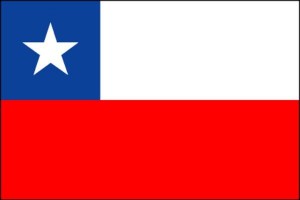 Chile Population 2014
Chile Population 2014
Based on the total number of births, total number of deaths, net migration rate, and the population of 2013, the population of the Republic of Chile for 2014 is estimated at 17,666,068, which makes up about 0.25% of the population. Chile is ranked 60th in terms of population rankings, behind Niger, but ahead of Burkina Faso. As of July 1, 2013, the population was recorded at 17,619,708. Thus, since last July, the population has grown by 46,360 people or by a growth rate of 0.26%. The last official census in Chile was taken in 2002. The census recorded the population at about 15,116,435. Thus, since the last census, the population has grown by 2,549,633 people or by a growth rate of 16.87%. Based on the total land area and the total population of the country, the population density of Chile is about 23.77 people per square kilometer or 61.56 people per square mile.
Demographics of Chile
The majority of the population identifies as either white or mestizo, which is a mixed ethnic group. However, the majority of the population seems to be of Caucasian origin. There is also an Amerindian population that makes up the country. The main language of the Republic of Chile is Spanish; however, the Chilean dialect of Spanish is a slightly different variation of the standard Spanish language. There are also some indigenous languages throughout the country.
Government of Chile
The Constitution of Chile establishes the country as a representative democratic republic made up of the executive, legislative, and judicial branches. However, the 1988 plebiscite really opened up the government to be what it is today, allowing for constitutional amendments in the future. The president of Chile is the head of the executive branch, head of government, and head of state. The president serves four-year terms and cannot be reelected sequentially. However, there is no limit in the number of terms that a person can be president, as long as the terms are not sequential. As of March 11, 2014, the President of Chile is Michelle Bachelet, a member of the Chilean Socialist Party. In fact, she is the first person to win the presidency twice since 1932. The legislative branch is known as the National Congress, which is made up of two chambers: the Senate and the Chamber of Deputies. Senators serve eight-year terms, while deputies only serve four-year terms. The Senate consists of 38 seats and the Chamber of Deputies consists of 120 seats. The current President of the Senate is Guido Girardi, a member of the Party for Democracy, and the current President of the Chamber of Deputies is Edmundo Eluchans Urenda, a member of the Independent Democratic Union Party. The judicial branch is independent of the other branches of the government. It consists of a Court of Appeals, a system of military courts, Constitutional Tribunal, and the Supreme Court of Chile, which does not contain the power of judicial review like the United States Supreme Court has. The Supreme Court has twenty-one justices, otherwise known as ministros, including one president that serves for two years. As of January 6, 2014, the President of the Supreme Court of Chile is Sergio Munoz. Lastly, Chilean citizens have a right to vote for the presidential elections, which are judged fairly and freely.
Geography of Chile
Chile makes up 756,950 square kilometers or 292,260 square miles of area on the western border of South America. The country stretches 4,300 kilometers or 2,670 miles from north to south and 350 kilometers or 217 miles from east to west. It is located within the Pacific Ring of Fire, which is the geographic location in the world where 90% of the world’s earthquakes and 81% of the world’s largest earthquakes occur. On the eastern border of the country lies the Andes Mountains, separating Chile from Argentina. The Atacama Desert lies in the northern portion of the country and contains high concentrations of cooper and nitrates. The Central Valley is the dominating agricultural and population region since it contains Santiago, which is the largest metropolis in the country. Lastly, southern Chile is made up of forests, large areas of land perfect for grazing, and even a string of volcanoes.
 Education in Chile
Education in Chile
The Chilean Constitution mandates that students must attend primary and secondary school. Primary school typically lasts from ages 6 to 13 and secondary school lasts from ages 14 to 17 or 18. Secondary school is broken up into three different categories after the first two years. There is a Scientific-Humanist option, Technical-Professional option, or an Artistic option based on the goals and desires of the student. If the students choose the Technical-Professional route, they can attend industrial, commercial, technical, or polyvalent schools. After secondary school, students can choose to attend a university or a professional/technical training center. In order to obtain admission into a university, a student must take and pass the University Selection Test, managed by the Ministry of Education. In terms of tuition coverage, about 93% of students in the primary and secondary systems are covered by governmental education vouchers and thus do not need to pay tuition. The other 7% of students attend non-subsidized private schools throughout the country. The total adult literacy rate in Chile is 98.6% of the adult population. The male and female youth literacy rate is 98.9% of the youth population. 93.4% of relevant males attend primary schools and 93.3% of relevant females attend primary schools.
Since 2011, there have been a series of student protests based on the treatment of education in Chile. Students from both the university and secondary levels have been occupying schools and picketing, demanding better education legislation in the country. Many demands from the university level include increased state support for the public universities, free public education, a better accreditation process to ensure quality of schools, and prohibiting for-profit institutions. The high school students are demanding central government control over the lower school systems, increased spending and higher pay for teachers, and better development of the vocational schools. Some progress is thought to be underway as some of the main members of the protests have been elected to the parliament. Lastly, these protests were thought to stem from the 2006 student protests during President Bachelet’s first term.
Health and Health Care in Chile
Chile has two different insurance forms for health care: FONASA and ISAPRE. About 73.5% of the population participates in FONASA, while 15.9% participates in ISAPRE. The remaining population is uninsured. FONASA is the government health insurance and every worker, other than the poorest working class, pays 7% of his or her income towards the health insurance. This health insurance will cover the dependents of a worker’s family, along with pregnant women until the sixth month after the baby’s birth. ISAPRE also involves paying 7% of a worker’s income, but since it is the private option, many people opt to pay more in order to have more options and coverage. While there are two different types of insurance, there are also two types of care: modality of institutional care and free choice modality. The modality of institutional care involves simply using public health care facilities. Free choice modality involves using professional and private health care facilities, along with the ability to use some public hospitals as well. In order to qualify for free choice modality, an employee must pay more than the standard 7% known as the Health Care Bonus.
The life expectancy for Chilean citizens is 79.7 years. The under-five mortality rate is 9 deaths per 1,000 children under five, while the infant morality rate is 8 infant deaths per 1,000 births. Also, 5.9% of births are considered to be low birth weight. 98.5% of the population uses improved drinking water sources and 98.7% of the population uses improved sanitation facilities. About 90% of the population has immunizations for the major illnesses and diseases. Lastly, about 0.4% of the population is considered to have HIV.
Religion in Chile
The majority of the population identifies as members of the Roman Catholic Church. In fact, 89% of the population is considered to be Roman Catholic. The other 11% of the population identifies as some denomination of Protestantism. Also, there is a very small Jewish population in the country.
Sports in Chile
The three major sports in the Republic of Chile are football (American soccer), tennis, and traditional rodeo. There are even some indigenous sports, which all originate from a sport called “palin”, which is similar to hockey. Chile was also the only Latin American country at the first Olympic Games in 1896. Sports are hardly sponsored in Chile. Therefore there are only a few public sport centers, while private sport clubs are often exclusive and very expensive. The national sport is soccer, every weekend you will see people playing on any suitable field.
Food in Chile
Dishes in Chile frequently consist of seafood and high-end red wine. It is nothing like Mexican food, which frequently uses the chili pepper. Its dishes combine influences from both Europe and its indigenous populations. The country also makes a lot of different types of beef dishes. Traditional Chilean food gets its diverse flavors from the diversity in the products that are naturally available due to the varying landscape. But naturally people from different regions also have different eating habits. Then you have the influences of various cultures with the European, Native American and Spanish culture being foremost in exerting their sense of taste.
Visit Chile
Historical Population of Chile
The population of the Republic of Chile has continually increased over the last half a century. However, there have been times throughout this time where the population slowed its increase down and sped its increase up. Over the last few decades, the population has seemed to slow down its increase.
| Year | Population (millions) |
| 1960 | 7.652 |
| 1965 | 8.656 |
| 1970 | 9.578 |
| 1975 | 10.42 |
| 1980 | 11.18 |
| 1985 | 12.11 |
| 1990 | 13.19 |
| 1995 | 14.41 |
| 2000 | 15.42 |
| 2005 | 16.3 |
| 2010 | 17.11 |
| 2011 | 17.27 |
Projected Population of Chile
The population of the Republic of Chile is expected to continue its trend of population increasing up until 2045. Then, the population is expected to decrease. The birth rates are expected to decrease from about 14 births per 1000 people to about 10.2 births per 1000 people. However, the death rates are expected to increase from about 6.3 deaths per 1000 people to about 11.4 deaths per 1000 people.
| Year | Population (Millions) | Percent Increase |
| 2015 | 17.816 | 2.4% |
| 2020 | 18.448 | 3.5% |
| 2025 | 18.970 | 2.8% |
| 2030 | 19.360 | 2.1% |
| 2035 | 19.613 | 1.3% |
| 2040 | 19.726 | 0.58% |
| 2045 | 19.719 | -0.04% |
| 2050 | 19.639 | -0.41% |
Other Resources
Lear more about Chile population statistics in 2013 here.


